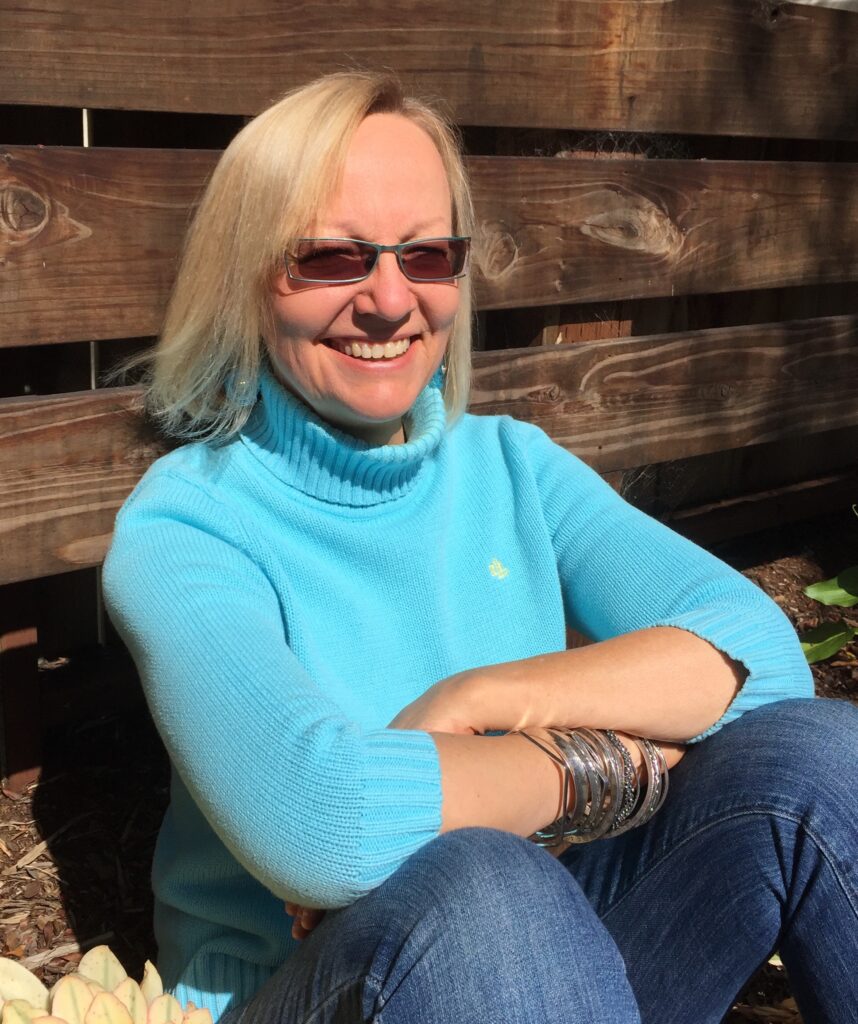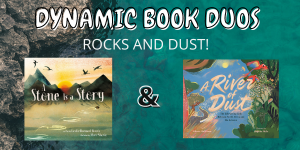
Please welcome authors Leslie Barnard Booth and Jilanne Hoffmann to Dynamic Book Duos– a blog featuring two books that pair together in a meaningful way along with coordinating educational activities to strengthen reading skills. This week’s Dynamic Book Duos pairing focuses on rocks and dust–and reveals that these commonplace materials are dynamic, ever-changing, and far from insignificant.
PERFECT PAIR: A Stone Doesn’t Sit Still—it transforms and travels the globe!
A Stone Is a Story written by Leslie Barnard Booth (illus. by Marc Martin) and A River of Dust written by Jilanne Hoffmann (illus. by Eugenia Mello) use lyrical language to show the wondrous ways that rocks reflect Earth’s ancient and evolving history while providing the minerals needed by all life on Earth.
In the case of A Stone Is a Story, the narrative follows a stone’s journey over hundreds of millions of years as it is transformed by intense heat and pressure, erosion, and other natural elements. In A River of Dust, stone (eroded to dust) makes its wind-borne journey across an ocean, transporting minerals between two continents that were torn apart by great forces.
Both books introduce geologic processes, nutrient cycling, and how nature’s systems are all interconnected. They also leave the reader with hopeful anticipation for the future. In A Stone Is a Story, the ending leaves open the possibilities for what the stone may become (a metaphor for a child’s future). In A River of Dust, the ending reassures the reader that two continents, having maintained their connection through dust, will be physically joined once again (a metaphor for a child’s connection with loved ones).
Book 1: A Stone is a Story
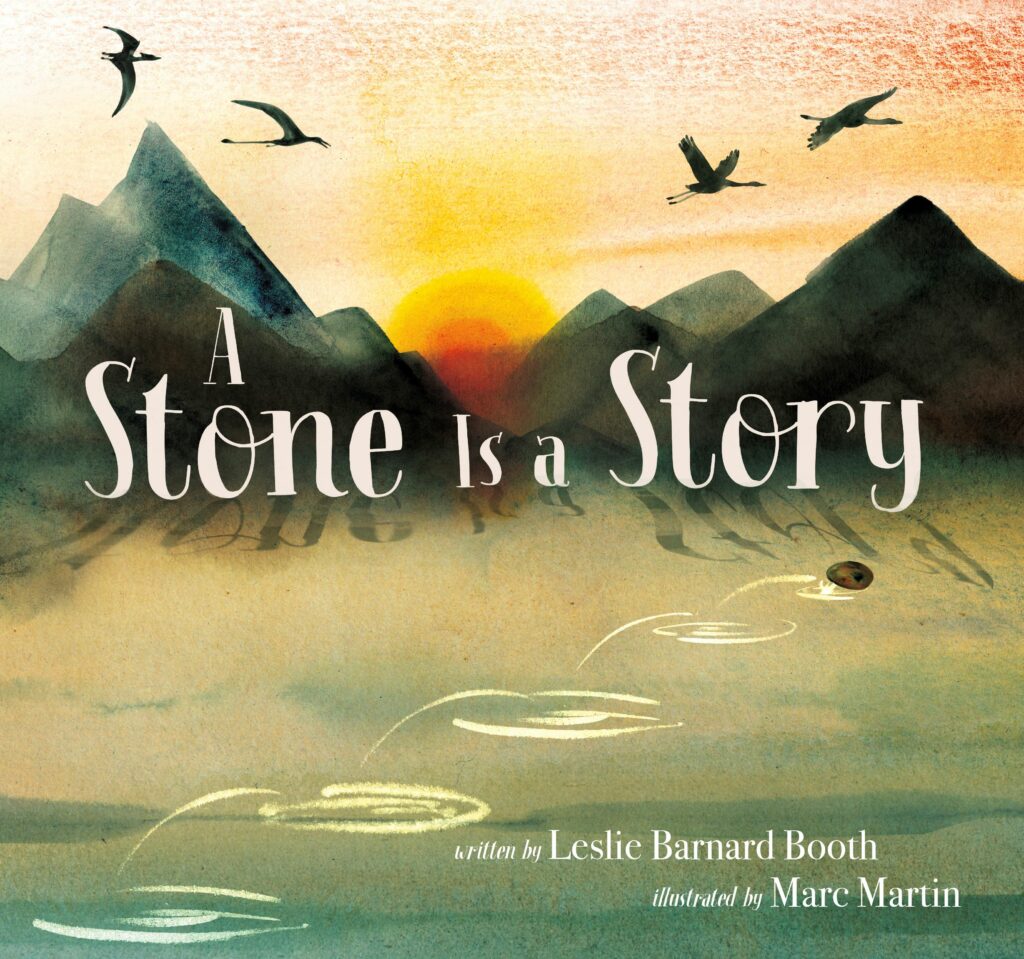
“Where do rocks come from?”
The answer may be more incredible than you think! After all, a stone is not just a stone: a stone is a story. Embark on a journey across time to see how one stone can change and transform, from magma under Earth’s crust to the sand swept up by a rushing river to the very heart of the tallest mountain. Watch what happens when rain, ice, and wind mold this rock into something new, something you might even hold in your hand—something full of endless possibility.
Complete with additional information about geology and the rock cycle, this lyrical and captivating story invites readers to experience the wonder of the natural world all around us, and to see—in every cliff, pebble, and stone—a window into Earth’s deep past.
Book 2: A River of Dust
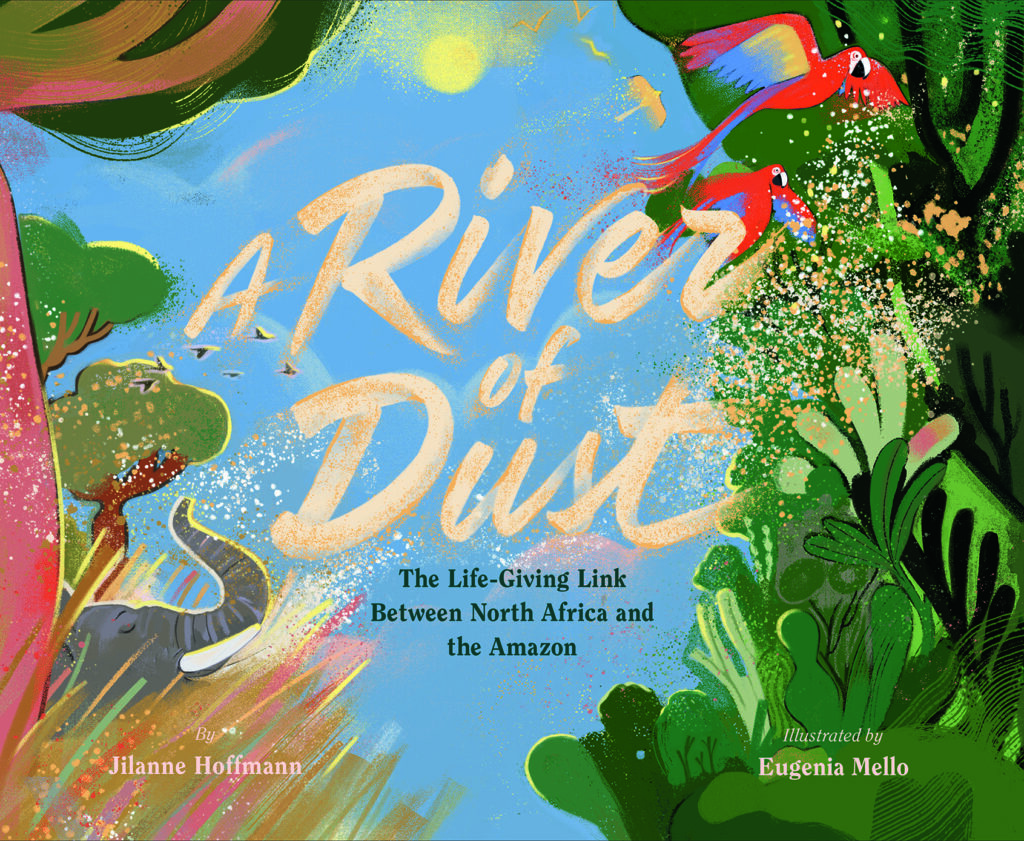
How can the Amazon rainforest, with its depleted soil, sustain more trees than the number of stars in the Milky Way? What is its secret?
Told from the perspective of dust, A River of Dust answers this question by taking readers on a vibrantly-illustrated journey that spans two continents separated by a vast ocean.
The dust of the North African Sahel—a ribbon of land between the Sahara to the north and the savannah to the south—lifts with the harmattan wind each winter season. It mixes with dust from the Sahara, and travels thousands of miles westward, across the African continent and the Atlantic Ocean, to reunite with its unforgotten home deep in the Amazon basin. This dust carries mineral cargo that nourishes plankton in the Atlantic and provides key nutrients to the Amazon rainforest. But more than this, A River of Dust is about understanding connections and how something as small as dust can affect Earth’s ecosystems and play an essential role in preserving the health of our planet.
Additional details describe how scientists use NASA satellite data to estimate the quantity of dust that makes the journey, how the nutrients carried by dust feed the Amazon and the South Atlantic Ocean, how dust alters hurricane formation, how geologists figured out that the continents were once a supercontinent, and more!
Educational Activities:
Activities for A Stone Is a Story:
Geology Field Journal: Thinking Like a Scientist
After reading A Stone Is a Story, take students outside. Have them find 3 rocks that interest them. Using this printable field journal, have students sketch their rocks, describe them, and formulate questions about them.
Art Meets Science: Mason Jar Stratigraphy
Stratigraphy is the analysis of the order and position of buried fossils or archaeological remains. In this activity inspired by sand art, explore stratigraphy and rock formation by creating a model of sedimentary layers and embedding each layer with fossils. Find the full activity here.
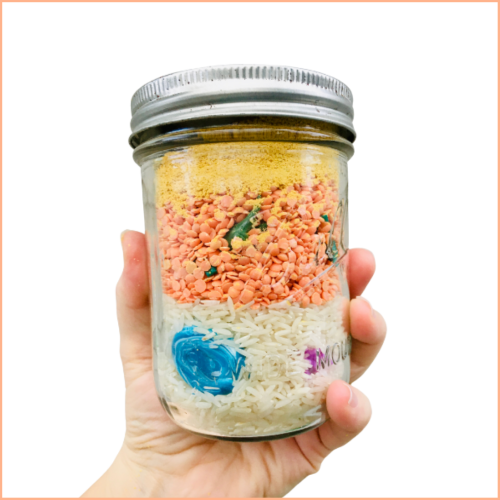
Find more educational activities to accompany A Stone Is a Story here.
Activities for A River of Dust:
Thinking of a story as a journey, a narrative sequencing of events
In A River of Dust, dust flies on a journey with a beginning, a middle, and an end. After reading the book, rewrite the story of dust’s journey in your own words. Where does it start? What does it see along the way? Where does some of the dust fall? What happens when the dust lands? Where does dust’s journey/story end? Does dust’s journey ever end, or does it transform and begin a new journey?
This journey activity can also be done using a captioned or wordless graphic novel format. Ask students to draw a series of panels that recreate dust’s journey and show what happens when it lands.
Continental Journey (Drift and Plate Tectonics)
Piece together a continental jigsaw puzzle to understand how scientists used fossils and other geologic clues to prove that Earth’s land masses were once one supercontinent they now call Pangaea. Today, scientists use GPS and satellite LIDAR technology to measure and monitor horizontal and vertical movement of plates in real time.
Pangaea Puzzle Activity (used with approval: Florida Museum of Natural History)
Find more educational activities to accompany A River of Dust here.
Activities for A Stone Is a Story and A River of Dust
Compare and Contrast
Using this Venn diagram, compare and contrast A River of Dust and A Stone Is a Story. You can compare: topic, point of view, language, use of metaphor, story structure, time period, mood, and more.
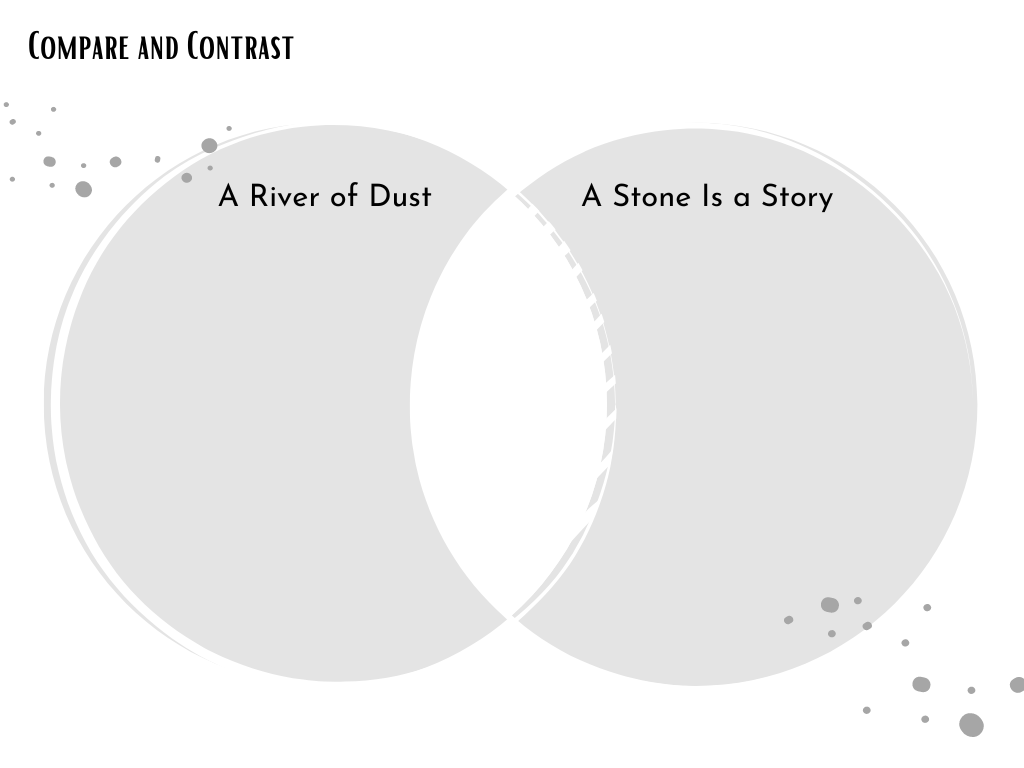
Nutrient Cycling Story
As both books show, sediment and the nutrients within sediment can travel far and wide, taking different forms and playing different roles.
After reading both books, discuss nutrient cycling with students.
Can some of the substances that make up a bone become part of a rock?
Can some of the substances that make up rocks become part of living things?
Refer to the books to explore these questions. Help students understand that yes, elements (or chemical building blocks) from a bone can become part of a rock, as we see in A Stone Is a Story. Nutrients in dust (eroded rock) can also get taken up by the roots of plants, as in A River of Dust. When people eat plants (or other animals that eat plants), those same substances become part of us.
Explain to students that elements in their bodies were once part of rocks and part of other living things, too. Ask students to write a story about where the elements that make up their bones might have been before they became part of them. Were those same substances ever part of a whale? Or a dinosaur? Or a cliff, or a handful of dust?
Meet the Authors:

